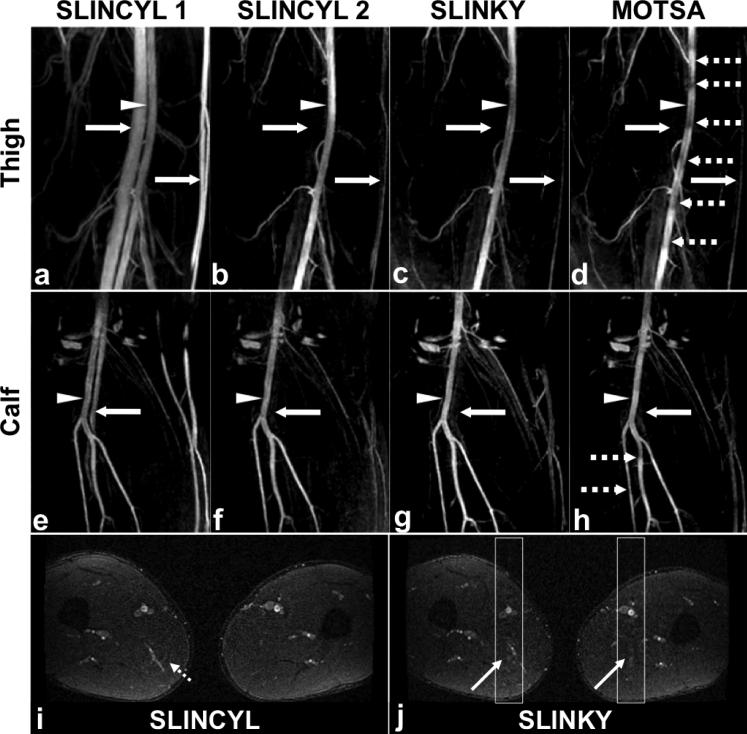FIG. 4.
SLINCYL, SLINKY, and MOTSA MRA of thighs and calves of healthy subjects. Compared to SLINCYL without venous saturation pulse (a,e), SLINCYL with venous saturation pulse (b,f) significantly improves contrast between arteries (arrow heads) and veins (solid arrows) without loss of arterial signal. Compared to MOTSA (d,h), both SLINKY (c,g) and SLINCYL successfully suppress the venetian blind artifacts (dashed arrows) and provide similar artery-vein contrast. However, SLINCYL achieves this with shorter scan times than SLINKY, as summarized in Table 2. The ghosting artifacts of the superficial femoral arteries are prominent with SLINKY (j), which are aligned in the A/P direction in the component axial slice (diagonal solid arrows). For SLINCYL (i), the artifacts are distributed over the x-y plane (diagonal dashed arrow), which is consistent with the simulation results in Fig. 2.

